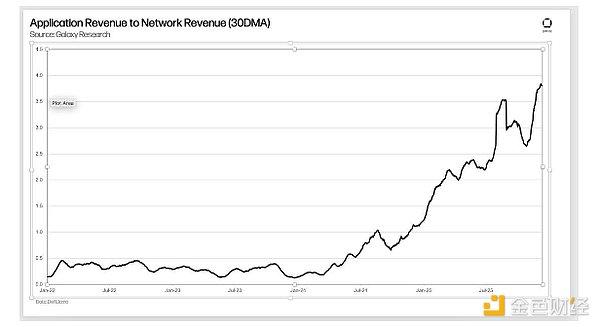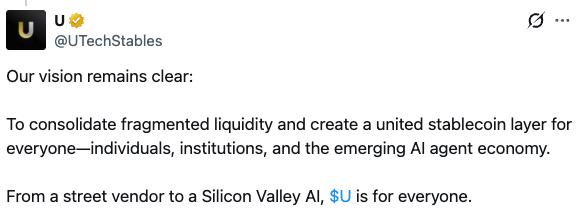Author: shushu
In the process of Solana's return to the top, the SVM track has become extremely lively, with Eclipse and Sonic in the front and SOON and Fogo in the back, all backed by well-known teams and investors. Fogo, which recently announced the completion of two rounds of financing, already has more than 3,000 angel investors on its investor list.
What is Fogo?
Fogo is a new SVM chain under development, which aims to provide "institutional-level" financial services on-chain by combining the performance of traditional finance and decentralized infrastructure.
Fogo is currently in the developer network (devnet) stage and is said to have achieved over 54,000 transactions per second. The testnet is expected to be launched in the first quarter of this year, and the mainnet is expected to be launched in the second quarter.

Fogo has already started to criticize the new public chain Monad, saying that it is "too slow". According to the whitepaper, Fogo has the following three main features:
1. Unified client implementation based on Firedancer: Through the high-performance client implemented purely in Firedancer, FOGO can achieve performance levels that other networks (including Solana) cannot reach.
Firedancer is a high-performance Solana-compatible client implementation by Jump Crypto, which has demonstrated higher transaction processing throughput than the current validator node clients through optimized parallel processing, memory management, and SIMD instructions.
Firedancer has two versions: "Frankendancer", a hybrid version using Firedancer's processing engine and the Rust validator node's network stack; and a full Firedancer implementation with a complete C network stack rewrite, which is currently in the late development stage. Both versions maintain Solana protocol compatibility, and FOGO will first launch the network based on Frankendancer and then gradually transition to pure Firedancer.
2. Multi-local consensus and dynamic co-location: Allowing validators to coordinate their physical locations at different times, while maintaining independent cryptographic identities in different regions, FOGO achieves block times and latency far lower than other mainstream blockchains.
The inspiration for multi-local consensus comes from the "follow the sun" trading pattern in traditional financial markets. In this pattern, market making and liquidity provision migrate between major financial centers as the trading day progresses, enabling continuous market operations while maintaining concentrated liquidity in specific geographic regions.
3. Curated validator set: Through a carefully selected validator set, FOGO incentivizes high-performance operations and prevents predatory behavior at the validator level.
In the initial stage, the selection of the validator set will be done through Proof-of-Authority, and will later transition to being directly managed by the validator set. By delegating the selection authority to the validator set, FOGO can socially sanction abuse without increasing centralization.
Can you trade without SOL? Fogo's future expansion
In Fogo's whitepaper, there is a section dedicated to Fogo's future development plans. To expand network access and improve the user experience, FOGO may introduce a "fee_payer_unsigned" transaction type, allowing transactions to be executed even if the initiating account does not have SOL. This feature, combined with on-chain fee payment programs, allows users to use SPL tokens (such as TRUMP, MELANIA, or BARRON) to pay transaction fees, while maintaining protocol security and validator compensation.
Users construct transactions containing their expected operations and SPL token payments to compensate the eventual fee payer. These transactions can be effectively signed without specifying the fee payer, allowing any party to complete the transaction by adding their signature and paying the SOL fee. This mechanism effectively separates transaction authorization from fee payment, allowing accounts with zero balances to interact with the network as long as they have other valuable assets.
This feature is implemented with minimal protocol modifications, only requiring the addition of a new transaction type and on-chain program to handle relay compensation. The system creates an efficient market for transaction relay services while maintaining the security properties of the underlying protocol. Unlike more complex fee abstraction systems, this approach does not require changes to the validator payment mechanism or consensus rules.
Crypto OG Godmother, the new SVM star with deep pockets
On January 25, the SVM L1 Fogo raised $8 million in funding on the Echo platform, a angel investment platform founded by Cobie, at a token valuation of $100 million, in "less than two hours". The round was led by The Echonomist, with participation from 4 CMS Holdings, Big Brain Collective, and Patrons. Last month, Fogo had just completed a $5.5 million seed round, led by Distributed Global with a $5 million investment.
Robert Sagurton, the co-founder of Fogo and a former executive at Jump Crypto, stated in an interview that the current round involved four Echo investment groups:
The Echonomist led by Cobie invested $6 million;
4 Ventures from CMS Holdings invested $1 million;
Big Brain Collective led by The Block CEO Larry Cermak invested $500,000;
And Patrons led by Synthetix and Infinex founder Kain Warwick invested $500,000.
At the same time, the founding team of Fogo also has close ties to Solana, cryptocurrencies, and traditional finance.
According to Sagurton's LinkedIn, he worked at Jump Crypto for over five years, serving as the Global Head of Digital Asset Sales and a Business Advisor. Prior to joining Jump Crypto, Sagurton had worked at the enterprise blockchain company R3, JPMorgan Chase, State Street Bank, and Morgan Stanley.
The other co-founder of Fogo is Douglas Colkitt, who is also the founder of Crocodile Labs and developed the decentralized trading platform protocol Ambient Finance (formerly CrocSwap), which he plans to deploy on Fogo.








